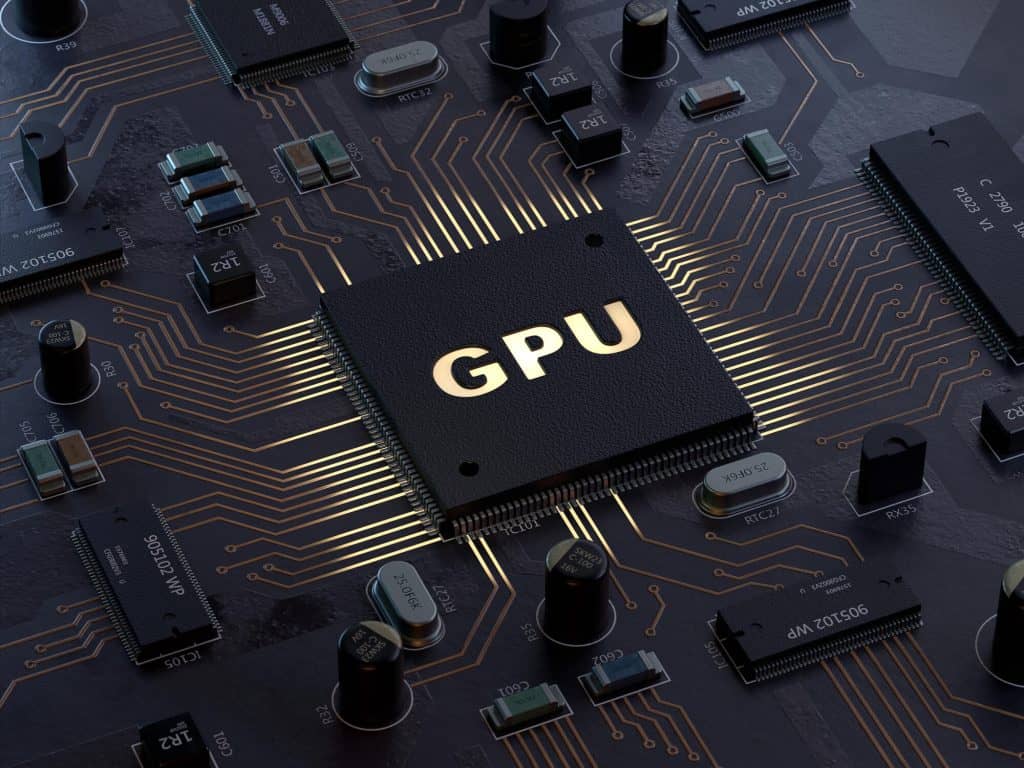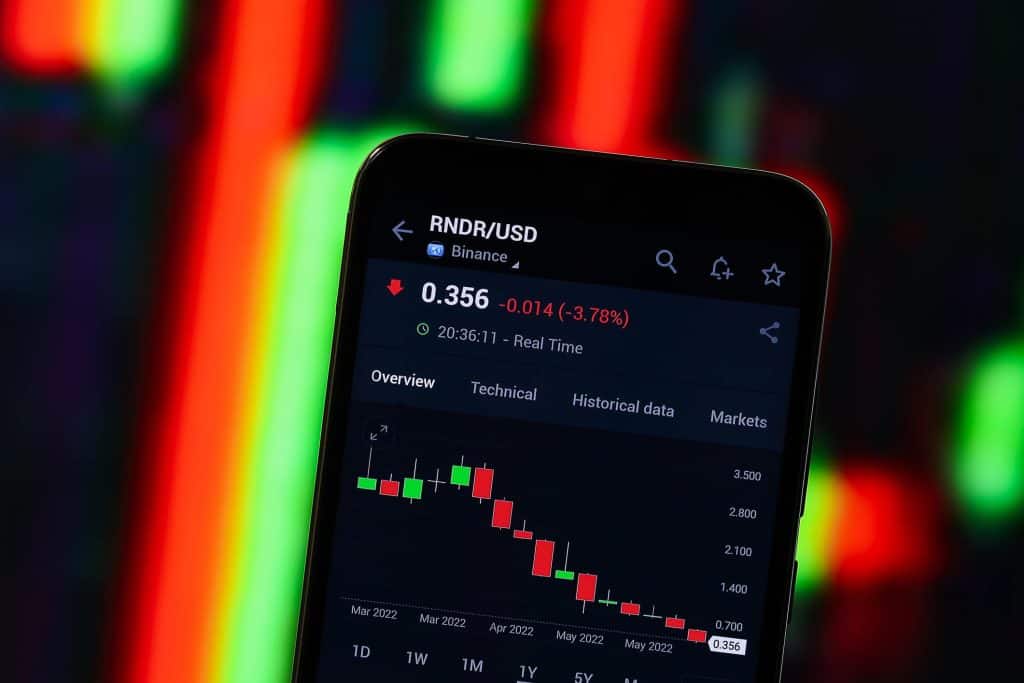A Beginner’s Guide to Render Token (RNDR)
Rendering plays a crucial role in the digital world, enabling the creation of stunning visual effects, animations, and graphics. However, traditional rendering solutions often face limitations in terms of speed, cost, and accessibility. Enter Render Token (RNDR), a decentralized rendering network that aims to revolutionize the rendering industry. In this comprehensive guide, we will explore what Render Token is, how it works, and its benefits for artists and studios.
Video editors and game designers often have to wait for hours to render a project. Some of them can’t even pursue their career in this industry due to the lack of computational resources. Some companies provide cloud solutions to simplify the process for creators. But the users have to rely on a third party when using these services.
Thus, they always have a risk of losing their valuable data. Therefore, movie producers and other such businesses avoid using these services. The blockchain industry is now providing decentralized solutions for video editors, game designers, and other creators. Render Network is one of the leading projects in this category that can offer the required services.
What is Render Token (RNDR) and How Does it Work?
Render Token (RNDR) is a blockchain-based platform that allows artists and studios to access a decentralized rendering network. It leverages the power of distributed computing to provide faster and more cost-effective rendering solutions. By utilizing blockchain technology, RNDR ensures transparency, security, and efficiency in the rendering process.
At its core, RNDR operates on the Ethereum blockchain, utilizing smart contracts to facilitate transactions and distribute rendering tasks. Artists and studios can submit their rendering jobs to the RNDR marketplace, where they are matched with available render nodes. These nodes, which can be individual computers or powerful data centers, contribute their computing power to complete the rendering tasks.
The platform offers several pricing tiers based on the requirements of the creators. The pricing of the nodes is determined based on reputation, speed, and security.
The platform rewards the node operators for their contribution. Thus, it encourages more users to provide computing resources. It will eventually help with building a platform that can help with producing high-quality visuals within a short span of time.
The 3D creators can also raise funds for their ideas by displaying them on the platform. It provides an opportunity for investors to join the project in its early stages.
Understanding the Basics of Rendering and its Importance in the Digital World
Rendering is the process of generating images or animations from 3D models or scenes. It involves complex calculations to simulate lighting, shadows, textures, and other visual effects. Rendering is essential in various industries, including film, gaming, architecture, and product design, as it brings virtual worlds and concepts to life.
The quality and speed of rendering directly impact the final output. Traditional rendering solutions often require expensive hardware and software licenses, making them inaccessible for many artists and studios. Additionally, rendering large-scale projects can be time-consuming, leading to delays in production timelines. Render Token aims to address these challenges by providing a decentralized network that democratizes rendering and accelerates the process.
The Evolution of Rendering: From Local to Cloud-Based Solutions

Rendering has come a long way since its early days when it was primarily performed on local machines. As technology advanced, rendering moved to dedicated render farms, where multiple computers were networked together to distribute the workload. While this improved rendering speed, it still required significant upfront investments in hardware and infrastructure.
The advent of cloud computing revolutionized rendering by allowing artists and studios to access remote servers for rendering tasks. Cloud-based rendering services offered scalability, flexibility, and reduced costs, as users only paid for the resources they consumed. However, these services still relied on centralized servers, which could lead to bottlenecks and limited availability during peak times.
Introducing Render Token (RNDR): A Decentralized Rendering Network
Render Token (RNDR) takes rendering to the next level by leveraging blockchain technology and decentralization. By utilizing the power of distributed computing, RNDR eliminates the need for centralized servers, making rendering more accessible, efficient, and cost-effective.
RNDR operates on the Ethereum blockchain, utilizing its smart contract functionality to automate transactions and ensure trust between participants. Artists and studios can acquire Render Tokens, the native cryptocurrency of the RNDR network, to pay for rendering services. These tokens are used to compensate the render nodes for their computing power and incentivize their participation in the network.
What is the Use of GPU Rendering Power?

The growing VR and AR industries possess a dire need for a platform that can render digital assets quickly and securely. Similarly, the metaverse is also a thriving industry that may require a huge amount of computing resources for creators and artists.
Fortunately, Render Network can solve this problem by allowing users to render Videos, NFTs, 3D animations, High-resolution images, and more. The developers may face problems with offering high-quality real-time results to the users if they don’t have enough rendering power.
GPU power is mostly considered a waste of resources because companies only use it for limited projects. And the rest of the time the GPUs remain idle. With Render, the companies no longer need to deploy an in-house solution as they can easily access the readily available processing power. They can also offer their idle GPU power on rent to earn money.
Getting Started with Render Token (RNDR): Step-by-Step Guide

To get started with Render Token (RNDR), follow these step-by-step instructions:
Setting Up Your Wallet and Acquiring Render Tokens
- Choose a compatible Ethereum wallet, such as MetaMask or MyEtherWallet.
Create a new wallet or import an existing one.
Securely store your wallet’s private key or seed phrase.
Purchase Ethereum (ETH) from a reputable exchange.
Use your ETH to acquire Render Tokens from supported exchanges.
Exploring the RNDR Marketplace: Finding and Submitting Rendering Jobs
- Visit the RNDR marketplace website.
Browse available rendering jobs or create your own.
Specify the required parameters, such as resolution, frame rate, and deadline.
Set the desired price you are willing to pay in Render Tokens.
Submit your rendering job to the marketplace.
Understanding the RNDR Network: How Rendering Tasks are Distributed and Completed
- Once your rendering job is submitted, it enters the RNDR network.
The smart contract matches your job with available render nodes based on their computing power and availability.
The render nodes download the necessary assets and start rendering the frames.
As each frame is completed, it is uploaded back to the network.
Once all frames are rendered, the final output is delivered to you.
Setting Up Your Wallet and Acquiring Render Tokens
Before you can start using Render Token (RNDR), you need to set up a compatible Ethereum wallet and acquire Render Tokens. Here’s a step-by-step guide to help you get started:
- Choose a compatible Ethereum wallet: There are several options for Ethereum wallets, but two popular choices are MetaMask and MyEtherWallet. Both wallets offer user-friendly interfaces and support the necessary features for interacting with the RNDR network.
- Create a new wallet or import an existing one: If you don’t have an Ethereum wallet, you can create a new one within the chosen wallet application. Make sure to follow the instructions carefully and securely store your wallet’s private key or seed phrase. If you already have an Ethereum wallet, you can import it into the chosen wallet application.
- Purchase Ethereum (ETH) from a reputable exchange: To acquire Render Tokens, you will need to purchase Ethereum (ETH) from a reputable cryptocurrency exchange. Choose an exchange that supports your local currency and has a good reputation for security and reliability. Follow the exchange’s instructions to create an account, deposit funds, and purchase ETH.
- Use your ETH to acquire Render Tokens: Once you have ETH in your wallet, you can use it to acquire Render Tokens. Supported exchanges will allow you to trade ETH for Render Tokens at the current market rate. Follow the exchange’s instructions to complete the transaction and ensure that the acquired Render Tokens are transferred to your wallet.
Exploring the RNDR Marketplace: Finding and Submitting Rendering Jobs
The RNDR marketplace is where artists and studios can find available rendering jobs or submit their own. Here’s how you can explore the marketplace and submit rendering jobs:
- Visit the RNDR marketplace website: Access the RNDR marketplace website through your web browser. Make sure you are using a secure and trusted connection.
- Browse available rendering jobs or create your own: Once on the marketplace website, you can browse through the available rendering jobs. These jobs are posted by artists and studios who require rendering services. You can filter the jobs based on your preferences, such as project type, resolution, or deadline. If you don’t find a suitable job, you can create your own by specifying the required parameters.
- Specify the required parameters: When creating a rendering job, you need to specify the parameters that define the job. These parameters include the resolution, frame rate, duration, and any specific requirements or instructions. The more detailed and accurate your description, the better the results you can expect.
- Set the desired price in Render Tokens: As the job creator, you need to set the price you are willing to pay in Render Tokens for the rendering service. Consider the complexity of the job, the time required, and the market rates when determining the price. It’s important to offer a fair compensation to attract render nodes to your job.
- Submit your rendering job to the marketplace: Once you have filled in all the necessary details, you can submit your rendering job to the marketplace. The job will be listed, and render nodes will be able to view and bid on it. You can monitor the progress of your job and communicate with the render nodes through the marketplace interface.
What Problems Does Render Token Solve?
Render Network uses OctaneRender software to connect the GPU providers to the users who want to perform rendering jobs. The creators send a request to the GPU provider along with the RNDR tokens. The GPU providers can accept or reject the requests based on their preferences.
Render Network has the goal of providing a powerful, highly efficient, and scalable rendering network.
Network Scalability
Render network waives the limitations of traditional render technology. The platform has introduced a decentralized system for tracking and managing rendering jobs globally.
A Better Use of GPU Power
The traditional blockchain networks use GPU power for the ‘proof-of-work’ consensus mechanism. In this system, the GPU is used to solve complex puzzles to secure their respective crypto networks. This kind of protocol wastes the GPU power instead of making it useful.
Render Network is dedicated to extracting the true potential of GPUs so that creators can bring more creative visions to life without worrying about any limitations.
The Sleeping GPU Network
Most users have deployed high-power GPUs to complete their rendering jobs. But their systems remain idle when they aren’t performing any rendering tasks. Render Network enables users to make this sleeping power profitable. Even regular PC and smartphone users can also provide rendering power to the platform.
Complete Control of Work
As it’s discussed earlier that some traditional tech companies provide rendering power for the creators but they don’t provide them with complete control of their work. Render Network, on the other hand, provides artists with complete control of their work so they can continue generating more creative projects without worrying about data theft.
Some of the Leading RNDR Projects
Octane X
Render Network provides access to a wide range of tools including Adobe After Effects, Daz 3D, Unity Engine, and a lot more. The platform also offers a separate ecosystem for users who want to process small-scale rendering projects. Apple users can also share their graphic card’s power output using Octane X.
Furthermore, it provides virtual support for all newer computers that use AMD and NVIDIA graphics cards.
NFT Revolution
Render network supports the minting and tokenization of NFTs. Therefore, the creators have completed millions of NFT-related jobs using this platform. The platform has collaborated with renowned artists including Alex Ross, Gene Roddenberry, and Beeple. The platform is also working on introducing the holographic NFT network.
RNDR Tokenomics
RNDR is the native token of Render Network that creators can use to purchase computing power from node operators. The platform also offers RNDR tokens as a reward to the node operators. With a circulating supply of 361.4 million tokens, RNDR has a market cap of $488 million.
It has a total supply of 536.87 million tokens that will be released through the rewarding process over time. RNDR ranks among the 100 best cryptocurrencies in terms of market cap.
Frequently Asked Questions
Here are some frequently asked questions about Render Token (RNDR) and their answers:
How is Render Network Different from Traditional Rendering Solutions?
Render Network (RNDR) differs from traditional rendering solutions in several ways. Firstly, RNDR utilizes a decentralized network, leveraging the power of distributed computing, whereas traditional solutions often rely on centralized servers. This decentralization allows for increased scalability, accessibility, and cost-effectiveness.
Secondly, RNDR operates on the Ethereum blockchain, utilizing smart contracts for transparent and secure transactions. Traditional rendering solutions typically involve manual processes and intermediaries, leading to potential delays and higher costs.
Lastly, RNDR introduces its native cryptocurrency, Render Networks, which are used to compensate render nodes and incentivize their participation. This token economy ensures a fair and efficient rendering process, whereas traditional solutions often involve complex licensing models and upfront costs.
What are the Benefits of Using Render Network (RNDR) for Artists and Studios?
Using Render Network (RNDR) offers several benefits for artists and studios. Firstly, it provides access to a decentralized rendering network, allowing them to tap into a vast pool of computing power. This enables faster rendering times, even for large-scale projects, without the need for expensive hardware investments.
Secondly, RNDR offers cost-effective rendering solutions. By utilizing distributed computing, artists and studios only pay for the resources they consume, making rendering more affordable and accessible. Additionally, the use of Render Tokens as a means of compensation ensures fair pricing and eliminates the need for complex licensing agreements.
Is Render Token (RNDR) Secure and Reliable for Rendering Projects?
Render Token (RNDR) prioritizes security and reliability in rendering projects. By operating on the Ethereum blockchain, RNDR ensures transparency and immutability of transactions. Smart contracts automate the rendering process, eliminating the need for intermediaries and reducing the risk of fraud or manipulation.
The use of distributed computing also enhances reliability. Render nodes contribute their computing power to the network, ensuring redundancy and availability. If a node goes offline or experiences technical issues, the network can seamlessly distribute the workload to other available nodes, minimizing disruptions.
Furthermore, RNDR leverages IPFS for decentralized file storage, ensuring that rendered frames are securely stored and accessible to all participants. This redundancy and fault tolerance enhance the overall reliability of the rendering process.
Conclusion
Render Token is one of the leading blockchain platforms that provide rendering power for artists and creators. It connects the creators to the render nodes so they may work on new projects even if they don’t have enough sources. The users only need to pay a small fee for using the computing power.
If you need more information about how Render Network works, feel free to get in touch with us. Also, don’t forget to subscribe to our weekly newsletter if you need regular updates about Bitcoin and the crypto market.











